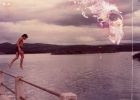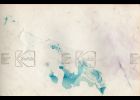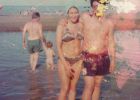Flusser Studies 10 - November 2010 / Double Issue / Thematic focus: Photography and Film
Photography, Cinema, the Technical Image, and Vilém Flusser
Fotografieren als phänomenologische Tätigkeit. Zur Husserl-Rezeption bei Flusser
Vilém Flusser not only defines his theoretical work as phenomenology, he considers the act of photography itself a phenomenological act. For this reason this contribution seeks to answer the question how much Flusser’s conception of phenomenology owes to Edmund Husserl and in what ways he has transformed Husserl’s own philosophical tenets. The main idea of this essay is that Flusser has reduced Husserl’s phenomenology to the concept of phenomenography. Nowhere in Flusser, in fact, can we trace any mention of Husserl’s idea of phenomenology as an aprioristic science of essentials. On the basis of this reduced understanding of phenomenology as a cultural science, however, Flusser discovers a remarkable structural affinity between philosophy and photography.
Über Fotografie schreiben. Vilém Flusser, Roland Barthes, Jacques Derrida
The paper explores how concepts of writing (“Schrift” or “écriture”), photography (as a “technical image”) and ideology are related in the works of Vilém Flusser, Roland Barthes and Jacques Derrida. A comparison of these three authors reveals both fundamental parallels and significant differences, depending on the interest, scope and line of the various argumentations, which are to be investigated.
Bilder – Denken. Über die Notwendigkeit einer Philosophie der Fotografie
In this contribution Claudia Becker examines the necessity for a “Philosophy of Photography” Flusser proposed in the 1980s. She expounds the problem that there is no deeper reception of his thought in the various discourses of the pictorial turn or media philosophy, even though Flusser can be read as one of the first who proclaimed a philosophy of (technical) images. She takes a closer look at the propositions of what Flusser calls a philosophy of photography and correlates them with other famous thinkers and philosophers.
Für eine Mythographie der Photographie
The Mythography of Photography is written as a dialog with the Philosophy of Photography of Vilém Flusser, considering the Myths not simply as a primitive state of thinking, but as the dark residuum of all kinds of modern experience. Therefore, the present Mythography of Photography tries to reveal the main Myths which we cite when we are following the gesture of Photography and which we can find hidden in the photographical apparatus. This Mythography is strictly focused on the ancient Greek Gods and shows a specified genealogy of photography initiated by the Titan Cronus – who has been confused since antiquity with Chronos – and ending with the monster Chimera, the symbol for all illusions and phantasms. Not only can we trace a genealogic connection between these two individual figures but within the mythical tale as a whole: a trace that illuminates the inner sense and some of the main concepts of Photography.
Vilém Flussers Bild-Theorie. Zur Philosophie des technischen Bildes ausgehend von der Fotografie
Towards a Philosophy of Photography presents all aspects of Flusser’s theory of technical images as well as the images’ ambivalence and paradoxes: the relation of writing and image from a historical and a post-historical perspective, the definition of technical images as images of concepts and as products of the (here: photographic) apparatus. The starting point of this approach to the photographic image is meta-theoretical: Flusser’s philosophical method oscillates between ‘telling stories’, a philosophical argumentation in the tradition of phenomenology, language philosophy and structuralism, a specific use of metaphors – and often together with Flusser’s own reflections of his ‘stories’, of ‘method’ and ‘metaphors’. This article explores Flusser’s philosophy as a field of intertwined ‘layers’ of argumentation that overlap in Flusser’s search for a new philosophy, corresponding with the new kind of images he proposes: a new philosophy in or through images. From this perspective, the shift from writing to image is accomplished by a shift from meta-theory to a ‘dia’ philosophy (Dieter Mersch), referring to the ‘metaphorological’ dimension of Flusser’s texts and his ‘gestures’.
On Creativity: Blue Dogs with Red Spots
Anke Finger’s short article addresses Flusser’s understanding and use of “creativity” and “art-making” and presents his writing for the US art journal artforum: 20 columns, published between 1986 and 1991. This excerpt is taken from the last chapter in the forthcoming, co-authored English-language introduction to Flusser, published by the University of Minnesota Press.
Vampyroteuthis: a Segunda Natureza do Cinema. A ‘Matéria’ do Filme e o Corpo do Espectador
Vilém Flusser's Vampyroteuthis Infernalis reenacts and actualizes the time-honored tradition of a mental experiment that purports to efface the boundaries between man and animal. This ancient conceptual device, known in Baroque times as physica naturalis, seeks to illuminate the world of culture by means of its approximation with the world of nature. Instead of opposing poles, nature and culture become reflecting mirrors where man can acknowledge his ties to nature and the animal kingdom. More than just a rhetorical trope, the so-called allegory of natural history comprises what could be defined as a "philosophy of animality," espoused by thinkers such as Walter Benjamin, Gilbert Simondon and Jacques Derrida. In Vampyroteuthis, Flusser resorts to a strange marine creature in order to elaborate a sophisticated meditation on human existence and our relationship with the technological apparatuses we incessantly devise. The goal of this paper is to examine the recent history of the allegory, tracing its developments in the works of contemporary scholars, such as Siegfried Zielinski, Manuel de Landa and Vilém Flusser himself. Moreover, it investigates the applicability of the "philosophy of animality" within the field of film theory, suggesting an approach to filmic experience that focuses on the "material" aspects of cinema and regards the spectator's body as a site for the translation of images into affect and sensation.
„Mit Schere und Klebstoff“: Überlegungen zur filmischen Techno-Imagination bei Vilém Flusser
This essay explores Flusser’s theoretical texts on the cinema and the concept of cinematic technical imagination. Flusser wrote about the cinema at two specific moments in his career, in the mid 1960ies and the late 1970ies. Altogether, however, this corpus amounts only to a handful of texts, very little indeed if compared to Flusser’s extremely prolific output on the philosophy of photography and the creative works of single photographers. In his analysis Flusser draws a radical distinction between film making and the structure of movie theaters, that is, between production and distribution. The cinema not only is far from having realized all its creative potential as a medium, the very way films are consumed thwarts the revolutionary force hidden within the medium. To really appreciate its force fully one would have to study the cinematic technical imagination and its ability to create a radically new vision of the world.
Flusser and the Polish (Photography) Novels
Reading Polish photographic novels through Flusser presents an expression that metaphorically depicts the principal aim of this essay. Vilém Flusser’s Towards a philosophy of photography is one of the crucial theoretical texts for current work in the field of comparative literature. Flusser’s theories are key for understanding the phenomenon of intermediality, which consists of the relations between photography and literature. This essay explains why, how, and in which type of novels Flusser’s theory is sustainable and relevant for intermedial analysis. Two Polish novels were chosen for this interpretation: “Pamiętnik diabła” by Irek Grin and “Fototerapia” by Katarzyna Sowula. The novels reflect on Flusser’s concepts in several ways, as well as on the analysis of the problems of photographic ethics and aesthetics involved in their narration. In the essay, Markowska focuses on the following issues present in the narratives of the novels: a photographer as literary character, ethical responsibilities of documentary photography, the book as a new medium, that is, the textual and visual reproduction of images within the literary art work. The analytical part is preceded by a theoretical introduction explaining Flusser’s photographic theory and the philosopher’s dialogue with ideas by Walter Benjamin, Susan Sontag and Roland Barthes.
Kurtis’ “Vandalised“ Photographs: On the Problem of Technical Images in Post-Documentary Photography
Walter Benjamin’s “Work of art in the age of its mechanical reproduction” and Vilém Flusser’s Filosofia da caixa preta have defined photography as a key problem towards developing a philosophy of technology. I’ll discuss their concepts in relation to experimental practices in post-documentary photography which I consider a fertile ground to discuss the similarities and differences underlying different approaches to technology in Flusser and Benjamin.
To contrast Benjamin’s mechanical reproducibility and Vilém Flusser’s technical images, I would like to analyse the processes of regaining an aura by means of a subversion of the photographic technology in contemporary photography. The creative intervention on the photographic camera, the process and results involved in Argentinean photographer Seba Kurtis’ images of contemporary migrants offer an interesting case to discuss these problems.









